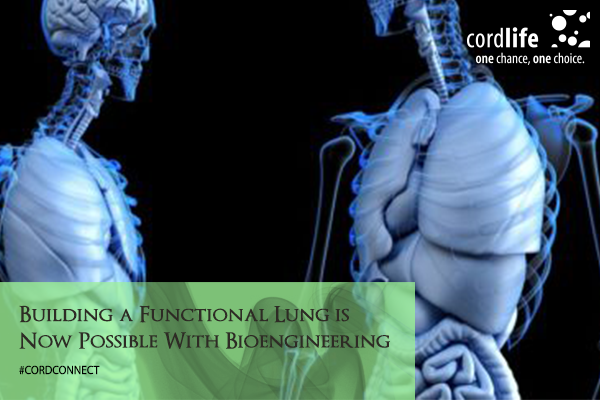A new study has inched us closer to designing a new lung with the help of bioengineering. A team of bioengineers has successfully created a functional lung with a healthy, perfusable vasculature in an ex vivo rodent lung.
End-stage lung diseases are the third leading cause of deaths around the world. It has only one true cure, a lung transplant. This is not always an option for a majority of the patients as it is an expensive procedure with a survival rate of just 10% to 12% after 10 years. Finding a donor’s lung is also very difficult and thus, there is an urgent need for new approaches to saving lives.
Bioengineering a Functional Lung that Breathes
Researchers around the world are looking for ways to cure lung diseases by promoting lung repair and increasing the number of donor lungs. However, lungs are a complex organ with more than 40 different types of cells in the matrix. The surface area between the airway and the vasculature is the size of a tennis court. Thus, bioengineering a functional lung from synthetic or decellularized scaffolds is not an easy task.
Until now all attempts to create a lung have failed. However, a Columbia Engineering team led by Gordana Vunjak-Novakovic, University Professor and the Mikati Foundation Professor at the Columbia University along with N. Valerio Dorrello, assistant professor of pediatrics at Columbia University Medical Center have finally tasted success to an extent. They are the first to successfully bioengineer a functional lung with perfusable vasculature in an ex vivo rodent lung.
Their study (DOI 10.1126/sciadv.1700521) has been published in Science Advances, wherein they talk about how their approach allows the removal of pulmonary epithelium while maintaining the viability and function of the lung matrix and the vascular network.
The New Approach
The Columbia team did not follow the traditional approach of building an organ. Usually, an organ is built from scratch by manufacturing a synthetic scaffold that resembles the shape of the organ. It is then seeded with the stem cells or other precursor cells. As lungs are a complex vascular jungle, most bioengineers have not attempted to build one. However, the Columbia team generated a natural scaffold by removing the rat lung cells using detergents. This led to a lung ‘skeleton’ consisting of proteins and molecules called extracellular matrix to remain.
The team in their previous experiments using rat lungs stripped the epithelial lung cells that are usually damaged in lung diseases. They also removed the endothelial cells that make up the vascular system. The team has managed to repopulate the functional epithelial cells; however, restoration of the blood supply was a challenge.
The new approach, therefore, attempted to strip only the lung epithelial cells without disturbing the blood vessels. They hoped this approach would lead to better results. The researchers tried an airway-specific method for removal of the pulmonary epithelium. They even aimed to preserve the lung vasculature, matrix, fibroblasts, myocytes, chondrocytes, and pericytes.
After the lung cannulation, they ventilated the lungs and perfused them on an EVLP (ex vivo perfusion system). Intratracheally, mild detergent solutions were injected into the isolated lung for removal of the epithelial cells. The vasculature was protected by circulating a perfusate containing electrolytes and energy substrates. The result was a lung scaffold that had a well-maintained bronchial and vascular architecture. The attachment and growth of human adult, as well as the cell-derived pulmonary cells in the ex vivo bioreactor, becomes possible due to the well-preserved architecture.
The building of a functional lung has become a breakthrough step in the field of bioengineering that has opened many frontiers in regenerative medicine.
